There is much truth to be told by a charkha. For some, it may just be a spinning wheel that’s a mere throwback to another time and generation. However, it’s a vital tool that keeps life, culture and values spinning in a harmonious direction.
After trying to seek a “good” career, Ashok Bishnoi was drawn to his calling in life during a chance encounter with beautiful hand embroidery. This led Ashok on a trip to the India/Pakistan border into Thar Desert, which brought him face to face with refugees who, over years of rejecting the pressures of industrialisation, have kept their handicraft and village culture alive and thriving.
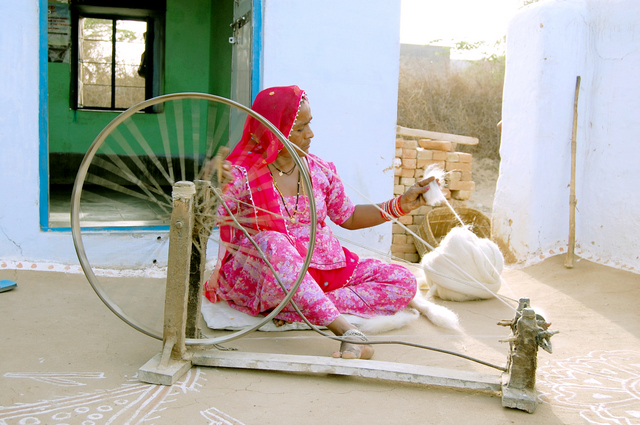
With the guidance of Hindu spirituality and the teachings of Mahatma Gandhi, as well as a desire to restore simple, village values back into India, Ashok set out to start his own society of handicrafts and help the Hindu villagers of Thar Desert to preserve their way of life and traditions. This also led Ashok to re-embrace his village roots and start The Charkha for the villagers so they, too, could bring their handicrafts to the world while preserving their simple village ethics. Ashok now has a vision for the rest of the world to re-embrace simple, village-like values and end the “rat race and indignity”.
I spoke with Ashok about his handicrafts society, Hastshilp, his connection with the people of Thar Desert, and how he has helped these villagers sell their handicrafts while ensuring their village way of life is preserved for years to come, sans industrialisation.

When did Hastshilp start and what motivated you to start this society?
“Hastshilp was registered ten years ago in June 2004. But it was in my mind before that. I was a young man, 25 years of age, with childhood experiences from village life and city life experiences later on, up to this age. I remember, I used to compare these two experiences and think about what the life is in general, what is its purpose, and if there is any God and what is his/her purpose.
I had pressure from my family members to get a good career, which I was unable to get. This made me sad and doubtful about my abilities. But, I was always thinking about the root cause of this problem – unemployment – which was common with many young boys and girls like me.
One day I found some very beautiful hand embroidered cushion covers in a shop at a craft fair. For me, this hand embroidery was something very genuine, cultural, and made me feel like there must be something very wonderful behind it. The embroidery was made by refugee women from Pakistan, living in Thar Desert in many villages along the India and Pakistan border which were around 150 kilometres far from Bikaner, where I lived.
There were approximately 1,500 such women and at least 50% could hand-embroider. But the young girls of these families couldn’t do this. The women told me their culture was changing into a city culture. I felt strongly that such a wonderful culture may not last. I observed that this craft represented a happy and wealthy time, because such an aesthetic is impossible in an unhealthy and poor life. I thought this craft could bring them their wealth back again. This could be done by making crafts and selling them to great people who would appreciate the hand embroidery for its great aesthetic value. But money was required for this. I decided to create a social enterprise to get funds through the government for this work. Hastshilp was then born.”
What is the main aim of Hastshilp and The Chakha?
“After creating Hastshilp, I was in Ahamdabad in Gujarat state, for project training and visited Gandhi Ashram. I liked Gandhi’s ideology and became very curious to read his thoughts. He praised India for its villages: ‘If India and through her the whole world has to make peace permanent on the earth, they must save villages. Without this there is no hope.’ This, and the charkha ideology, was an attempt to save villages against industrialisation. The Charkha aims to take Gandhi’s ideology forward.”
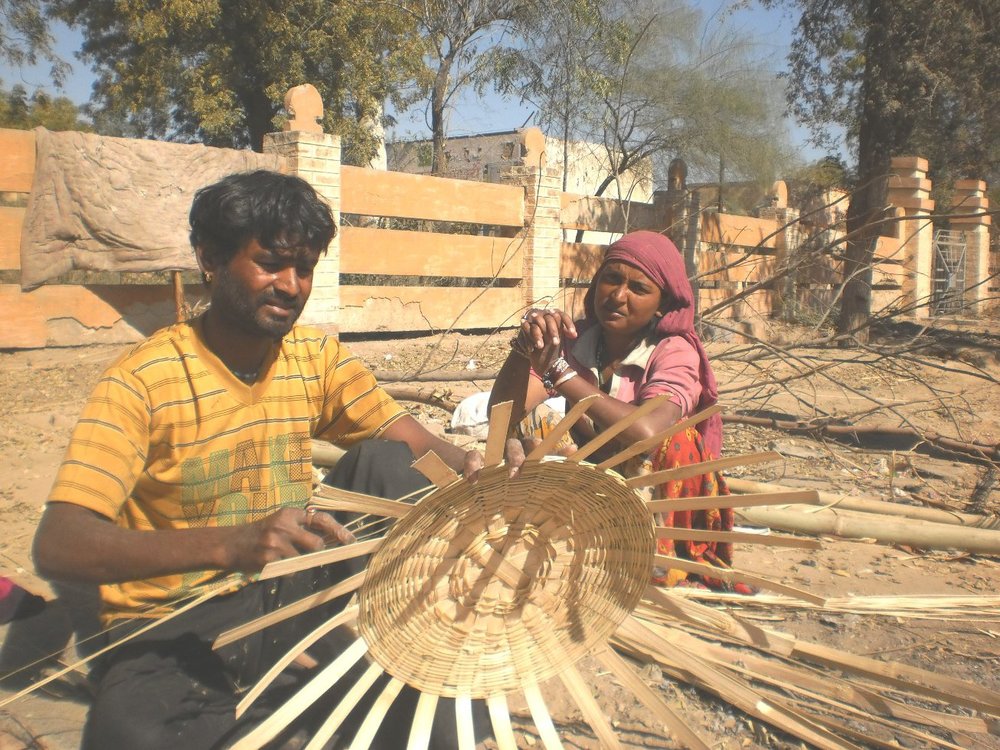
Tell me about life in the villages in Thar Desert…
“Life is so simple, peaceful and graceful. The houses are round huts made with local clay and local grass. There is no electricity but the huts are so cool in the summer months and warm in the winter. Even a child in the village personally knows each person in the village very well. They have wonderful traditions and customs for many occasions including birth, marriage and death. They cooperate with each other to organise ceremonies and share things furniture and pots for cooking instead of buying them. Children have a lot of space to play in the sand dunes and, when playing together, they learn necessary lessons for living in a society. They have their own farms with canal water to grow food and have goats and cows for milk. There is free government education for the children.
They save water and human waste is converted into natural fertiliser by the creatures in the sand. They do not produce garbage like in the cities. They don’t consume electricity, rather they cook food on natural fire wood or animal dung; very eco-friendly in many ways unlike city people.
They have lots of free time so they talk with each other and don’t feel lonely and have perfect mental health. They do a lot of physical work, and eat healthy, pure, self-grown food in place of impure and unhealthy food purchased from the market.
They are very ethical and always try to practice Dharma. They do not depend on any company for their employment because they are self-employed on their farms and have other work for each other in the village like making houses, sewing clothes, etc. Though this situation has continuously been destroyed by industrialisation over many years, like tractors and jeeps replacing camel carts for transportation. Still, there is a glimpse of great village culture. They do not have disputes but if they can’t solve a problem themselves they have help from their own mediators. That’s why they don’t need police, lawyers and courts.”
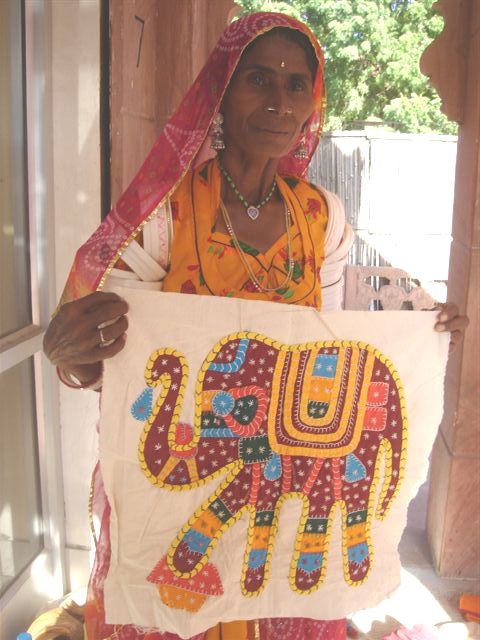
How did these refugees come to arrive into Thar Desert?
“They were forced into [India] by the India-Pakistan war of 1971. Pakistan forcefully compelled these people to leave Pakistan and go to India because of their Hindu religion. They had to leave all their properties behind in Pakistan and run away to India to save their lives. The government of India then kept them in relief camps for a long time, providing necessary facilities free of cost. They gave them Indian citizenship and allotted free agricultural land along India’s border with Pakistan in Thar Desert. These people have been living here ever since.”
Tell me about the handicrafts that are made by these villagers…
“The most common product made is khadi fabric. It’s one of the three basic needs after food and shelter, and most useful for people. khadi is also very popular in India. There are also woollen khadi shawls and stoles, hand-embroidered and patchwork home furnishings, bamboo baskets for home décor and yoga mats.
Mostly, the crafts have their own traditional designs and products but the inspiration for new designs come from buyers when they place their orders with us.”
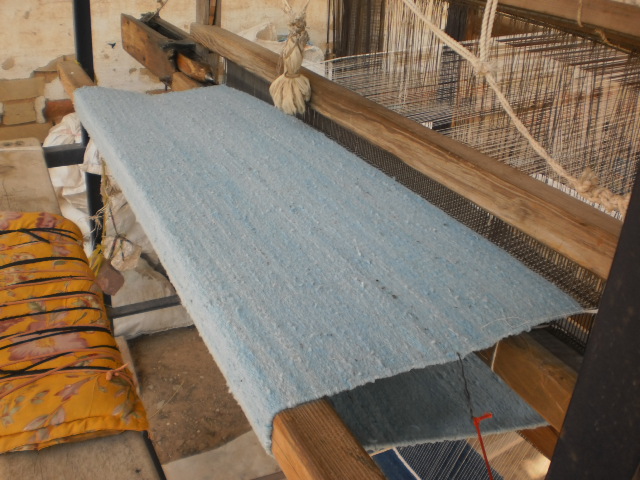
Industrialisation means millions of animals around the world are bred, exploited and killed for their meat, milk, fur, hair and fleeces. Leather, wool and hair also feature in these handicrafts. How do the villagers treat their animals and are animals only bred for this reason?
“Through industrialisation cities have accumulated huge wealth exhausted from villages which has destroyed the traditional self-employment based economics model. Before this, animals were in perfect harmony with the villagers. Village people were compelled to move towards cities for employment and could do nothing else than to bring their animals in the cities and sell milk there. In the villages milk was rarely sold, but here in the cities it was commercialised. In cities, animals have to stay in very small, congested spaces and many animals have to live together in one place. Their owners want to produce more milk for more money. This is how exploitation started. It’s a very painful story.
In the traditional village system, leather and wool is used in handicrafts in a healthy and natural way. Leather is taken from naturally dead animals and wool is taken off in summer when sheep don’t need it.”
What does the future hold for the villages of Thar Desert, The Charkha and Hastshilp?
“The Charkha has a dream to build an ashram with its own building of village architecture and a lot of open space for agriculture. This will be a unique place where people from all over the world can come, stay in the ashram and learn the charkha ideology (the village way of life in India). There will be khadi spinning wheels and looms in the ashram and workshops will be organised all year round for visitors. Each of the villages shall be connected to the ashram in the way that each artisan’s house in each village will produce khadi, and the raw materials, for sale in the ethical shop. In the future, The Charkha wants to ensure more than 1,500 artisans benefit directly by it and an equal number of supporters from around the world to work cooperatively with them to bring this charkha ideology to life.
It will be very difficult for the community to maintain its current way of life in India but I strongly believe that we will be able to convince people to revise their thoughts according to the charkha ideology of Mahatma Gandhi and Vedanta Dharma illustrations of Swami Vivekananda, and maintain this peaceful way of life in India and the world.”
What can people living in the industrialised world learn from the villagers and The Charkha?
“They can learn that there is an alternative, which is the village way of life in India. They can learn how to fight industrialisation. They can learn how it’s possible to live without products from big industries which has put us into this shameful state of rat race and indignity. They can learn how it’s more enjoyable, or in fact true joy, to be empathetic and selfless. They can learn what true entrepreneurship is. They can learn how we can make life simple, joyful, peaceful and meaningful through a silent non-violent revolution.”
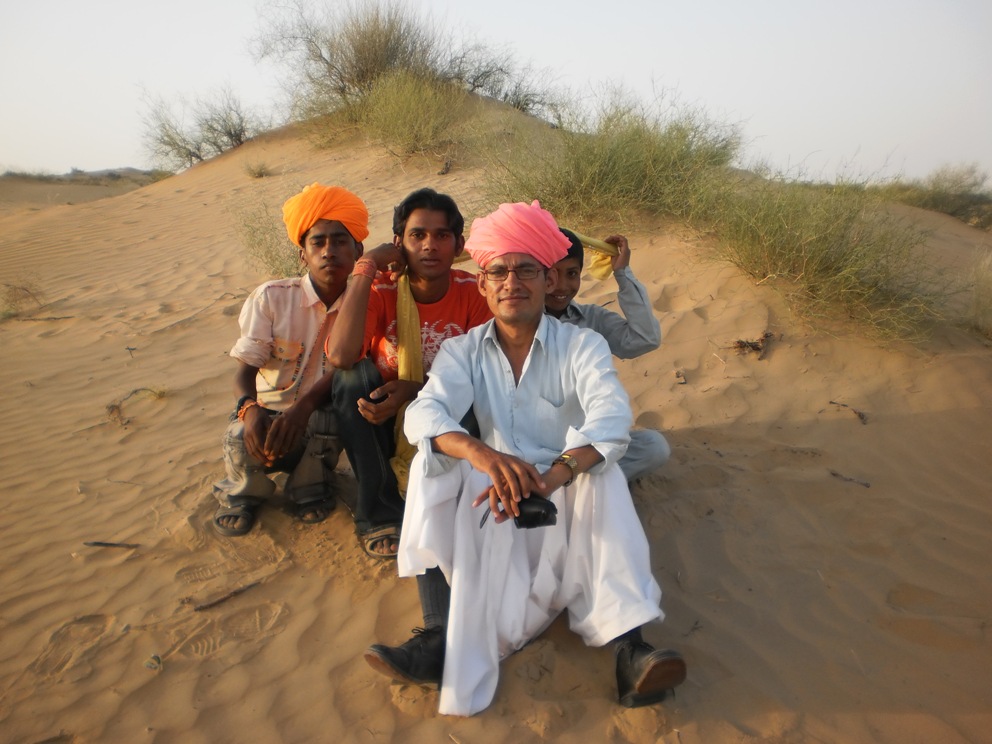
Learn more about the villagers of Thar Desert, The Charkha and Hastshilp by visiting the website or Facebook page.
Handicrafts can be purchased through their Etsy shop.

